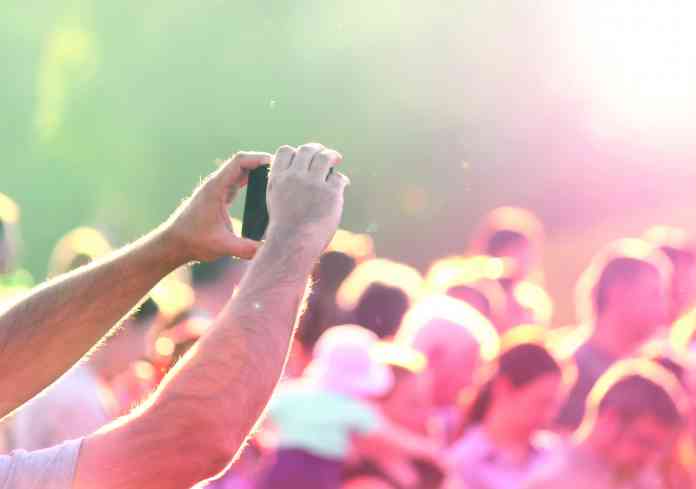
Social media and crowded places
Jon Coaffee, professor in the Resilient Cities Lab at the University of Warwick, discusses the use of social media in counter terrorism operations
In recent years new security threats have emerged alongside conventional risks to urban areas. Most notable amongst these has been the targeting of crowded places by terrorists in mass-casualty, no-warning attacks. Whilst most counter-responses have taken the form of designed-in interventions linked to hostile vehicle mitigation, emerging technologies, particularly social media, are playing an increasingly key role in counter terrorist operations before, during and after terrorist incidents.
Social media - Twitter, Facebook, Instagram and others - is now a core police tool allowing police to ask for and receive information from citizens instantaneously and provide a monitoring function. Its uptake presents a number of opportunities to enhance the resilience of crowded public places: advanced system monitoring; improved analytical capabilities; better coordinated information flow between multiple public agencies; better and faster communication with the public; and, more generally, an enhanced ability to utilise a greater amount of data and information more quickly.
These facets of social media use are being explored on a new European Union Horizon 2020 project - MEDIA@4SEC – which is focused upon enhancing understanding of the opportunities, challenges and ethical considerations of social media use for public security that can be used by end-users to improve their decision making.
The use of social media
But how do law enforcement authorities use social media before, during and after a terror attack? How can law enforcement authorities use crowd-sourced social media to assist live anti-terror operations and enhance their situational awareness? And, what is the overall effect of social media use during incidents? Does it shift the tactical advantage from counter terror officials to the perpetrators?
Recent international experiences of responding to terrorists events have illuminated a range of ways in which policing practice is adapting to the new social media landscape. One important adaptation is the increasing use made of social media to dispel rumours that can become toxic to an ongoing operation if left unchecked. Police are increasingly using social media during counter terror operations to quash rumours by proactively intervening in discussions and conversations and, in doing so, assist their own operations. But this is not without its drawbacks. For example, during the operation in the wake of the Boston Marathon bombing of 2013, negative outcomes resulted from the FBI's attempts to use social media to identify the perpetrators through actively engaging with citizens on social media. This led to online 'trials' of innocent people who had been wrongly identified by Reddit users and starkly illuminated the dangers of do-it-yourself policing by the public.
Other pressing quandaries for coping with live terror events include how to best cope with live video-sharing of tactical security operations during incidents, or attackers tweeting during an event. For example, during the Sydney siege in 2014, tweets highlighting police activity that could be viewed online served to enhance the perpetrator’s situational awareness and hence capacity to execute the attack. Similarly, during the Westgate shopping centre attack in Nairobi in 2014 the perpetrators used Twitter to claim responsibility for, and live tweet throughout, the attack in an attempt to control the narrative of the event as it unfolded.
Most recently, 2016 attacks in Munich and Berlin have once again highlighted myriad ways social media can be utilised to aid public security. On 22 July 2016, a mass shooting (downgraded later from terrorism) occurred in the vicinity of the Olympia Shopping Mall Munich, Germany. Ten people were killed and 36 injured. In this highly fluid situation, Munich police showed how social media can be a force of good in a crisis by keeping people informed with key communications on a regular basis, in several languages. Facebook activated its Safety Check feature so people in the area could let their friends and relatives know if they are safe (a feature also activated in Nice on 14 July when a 19 tonne truck was deliberately driven into a crowd killing 86 people and injuring over 400).
Moreover, citizens became actively involved when thousands of people stranded by the emergency and unable to get home were offered shelter by local residents via Twitter hashtag #Offenetür (open door). Tweets sent by Munich police during the live operation also advised citizens to stay inside and avoid public places amidst concerns crowded areas might be attacked: #Munich Police: "We currently do not know where the perpetrators are. Watch out and avoid public places." After the first shooting, rumours spread like digital wildfire on social media of possible further attacks in other parts of the city and of terrorists on the loose in the public transport system.
However social media use was not exclusively positive, illuminating a critical tension regarding the sharing of information during a live event. During the incident the Munich police pleaded with social-media users via its Twitter account to show respect by not sharing photographs of any victims. Additionally, tweets were sent during the incident asking the public not to share tactical information with the attackers. After the crisis passed, the police condemned those who had used social media to spread rumours and ‘play a wretched game with fear’.
Via Twitter, Munich police warned that ‘people who come up with such rumours should be prepared for us’. In contrast, after the attack the police tweeted to ask the public to upload material for evidence gathering. Five months later when a lorry was driven at a Christmas market crowd in West Berlin killing 12 and injuring 56, a similar strategic pattern of social media activity emerged; on Twitter people were told to stay at home and not to spread rumours or divulge ongoing operations. ‘Suspicious’ people nearby were arrested (and subsequently released), #Breitscheidplatz was established so that citizens could follow developments, and a ‘safety check’ page was activated in Facebook.
What these cases highlight are the need for law enforcement agencies to take into account social media developments which have added a new dimension to terrorist activity, and created a series of implementation challenges for police forces in using social media for live counter terrorism operations. Notably it showcases a need to learn from practice, advance strategic frameworks for using social media and develop a clearer understanding of how social media can and cannot be used for public security purposes, in so doing enhancing the ability of policing to respond effectively to similar events in the future. This in itself will require enhanced training opportunities – especially around ethical, legal and data-protection considerations when social media is employed – and new technical and governance frameworks to effectively manage social media.
Moreover, the cases in Munich and Berlin highlight that security is not just a police responsibility and that citizens can play an active role during events and in the post event investigative phase through do-it-yourself policing activities or citizen investigative journalism, but that such involvement needs to be effectively and responsibly managed .
Jon Coaffee is a Professor at the University of Warwick (j.coaffee@warwick.ac.uk) and coordinator of the MEDI@4SEC project.
















